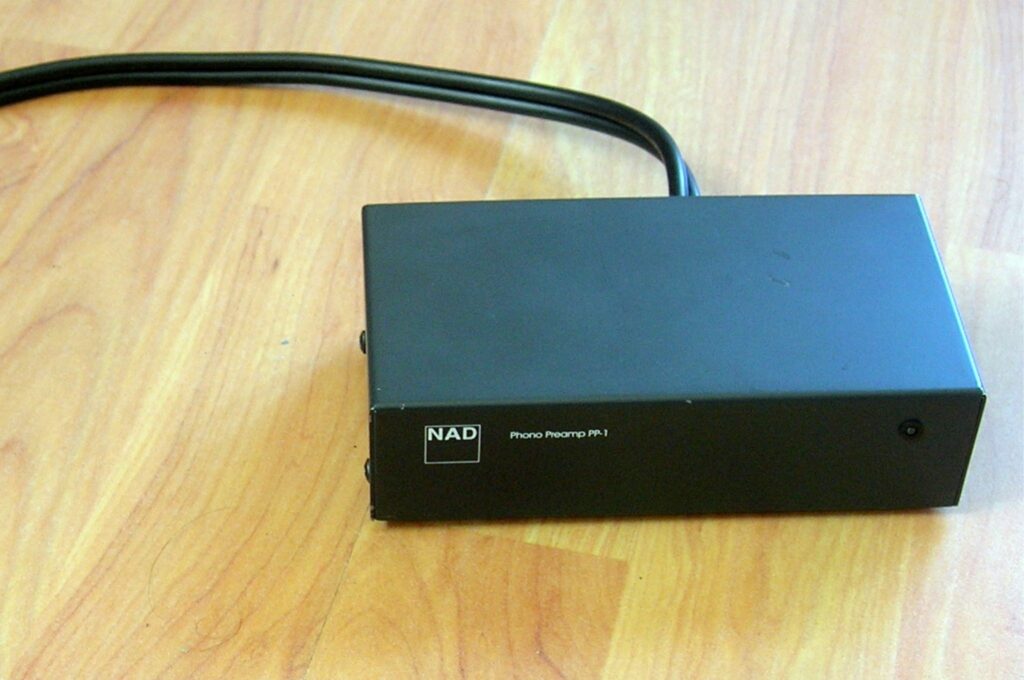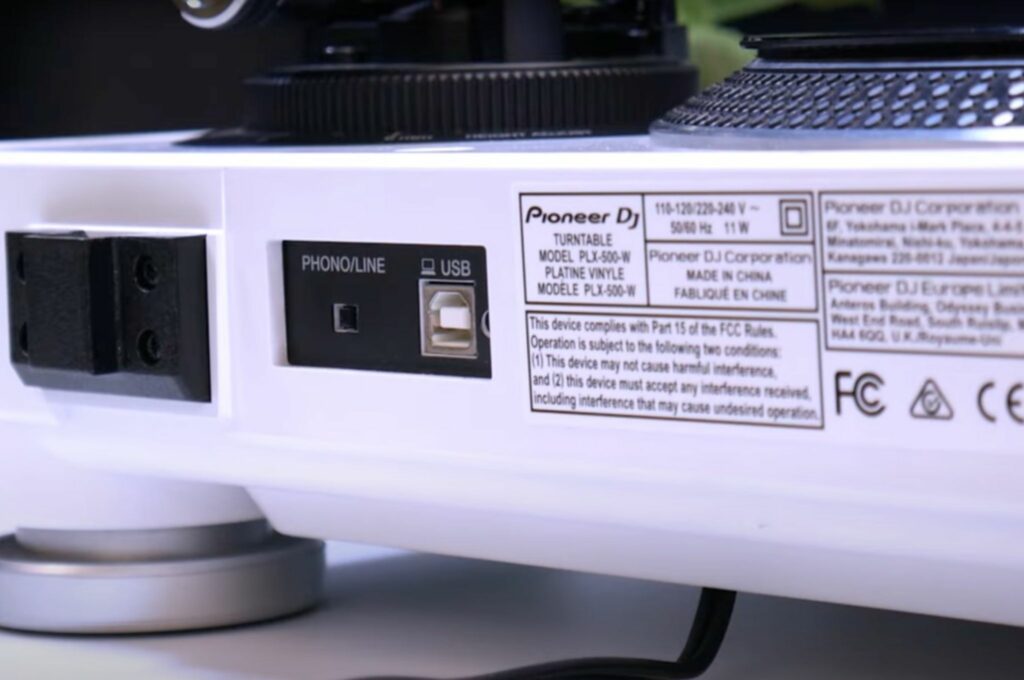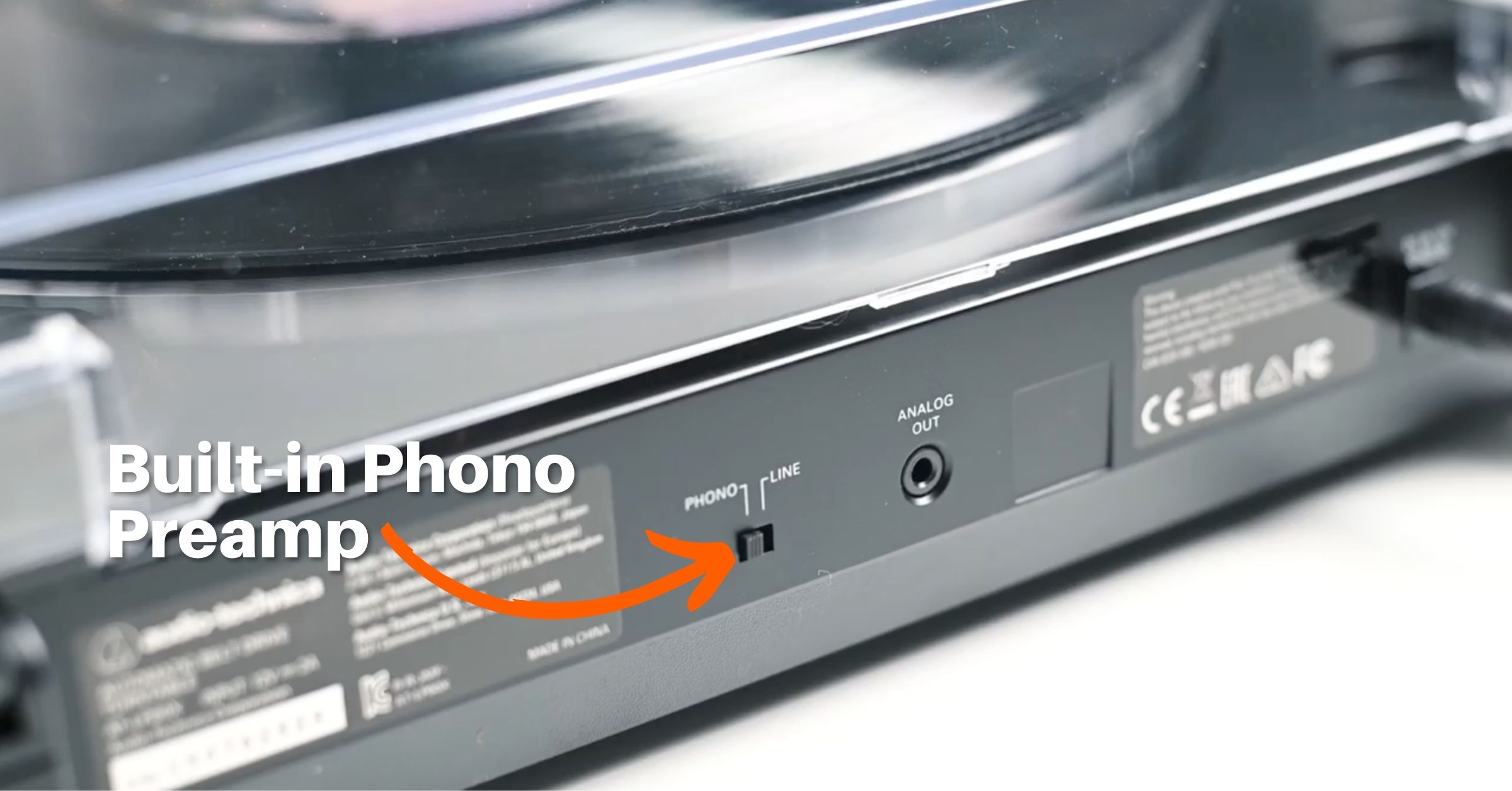The world of phono preamps is a complicated one. Preamps come in various forms, shapes, and sizes and just because you have one doesn’t mean you’re receiving the best quality of sound from your turntable. When contemplating using an internal phono preamp vs an external one there are a few key things to consider.
Let’s go through what you need to know about built-in and external phono preamplifiers.
What does a preamp do?
A preamp is an electronic device that boosts the signal of an audio source to what’s called line level, which is the standard sound signal for connecting audio equipment. This allows the audio source to be louder and higher quality when it’s played through speakers or a recording device.
Preamps come in all shapes and sizes and are used for a variety of equipment such as microphones, guitars, and turntables.
What’s considered a built-in phono preamp?
A built-in phono preamp is a preamp that comes pre-installed within a piece of audio equipment. Stereo receivers, turntables, and even speakers sometimes come with an internal preamp.
The easiest way of determining if you have an internal preamp is to check the back of it. On a turntable or speaker, you might see a “Line level” and “Phono” switch. This indicates there is an internal phono preamp that’s converting the signal to line level.
For a stereo system, you might see a phono input on the backside. This is another indicator that the receiver has a preamplifier within it.
Do a need an external phono preamp if I already have a built-in preamp?
Technically speaking, no you don’t need an external preamp if you already have a built-in one. You will be able to amplify the audio signal to line level just fine.
You might find yourself asking, “why do people purchase external phono preamplifiers then?” Well, there are a few reasons.
Firstly, not every turntable, record player, receiver, or speaker comes equipped with a built-in phono preamp. In fact, most higher-end audio equipment does not have a built-in preamp. While most entry-level to mid-level vinyl collectors might not care too much about sound quality, audiophiles who are purchasing this high-end equipment do.
Utilizing an external phono stage can push the sound quality to another level, especially if it’s a tube phono pre-amp.
Benefits of external phono preamps vs built-in ones

We’ve already alluded to external preamps being the choice of audiophiles, but let’s dissect why this is.
Improved sound quality
The major benefit to purchase an external phono pre-amplifier is because of the improved quality of the sound. External preamps generally have better build quality and electrical components compared to internal preamps.
This is because a built-in preamp often needs to fit within a smaller space of another piece of equipment, such as a turntable. Phono preamps within turntables are usually an afterthought and used as a sales “add-on.”
External preamps are built to do one thing: be a preamp. That’s why a higher-end external preamp will have less noise and distortion, more gain, and overall better sound than a built-in one.
Additional features
External preamps can also come with a variety of add-ons such as a headphone jack, Bluetooth, and gain controls. This can be great if your current setup doesn’t have these features, but it’s not the primary reason why people buy external preamps.
Customization
External preamps allow for the continued customization of your vinyl setup. Think about it, if you have a built-in preamp in your turntable and want to upgrade, you’re going to have to be stuck looking at turntables with a built-in preamp or have to shell out money for both devices separately.
Having a separate method of pre-amplification opens up the doors to a wide range of gear and equipment.
In addition, tube phono preamps allow for the swapping of tubes to adjust the sound. If you’re someone who likes to tinker around with equipment to test the sound difference, tube as opposed to solid state preamps are a great choice!
Benefits of a built-in preamp vs. an external one

Now on the inverse, let’s take a look at why someone might choose to stick with a built-in preamp.
Budget
The main redeeming quality of a built-in preamp is the fact that they are free add-ons to many record players and entry-level to mid-level turntables. You can begin playing your records one step faster and at no additional cost.
Compatibility
Preamps need to be compatible with the phono cartridge of the turntable they’re used with – either moving magnet or moving coil. Out of the box, you can be sure that the phono cartridge attached to the system is compatible with the internal preamp.
Space
If you have a limited amount of space or just don’t like multiple pieces of equipment displayed, internal preamps are the way to go. External preamps require an extra power supply and take up additional room, albeit not that much.
All external phono preamps are NOT built equally
Just like with internal preamps, external preamps can be built with low-quality components and circuitry. Just because a phono pre-amplifier is external does not make it good.
We generally recommended budgeting at least $100 for a solid external preamp that would be an upgrade over a built-in one. We’ve also put together a list of the best phono preamps at every price point to help guide your decision.
Do I need an external preamp for good sound quality?
Sound quality is subjective. What sounds like good quality to some will be poor quality to another. The biggest thing to consider is this: do you care?
If you’re happy with your current turntable setup and don’t care about maximizing every ounce of sound quality then odds are you’re not going to get much enjoyment from an external phono preamp.
Now, if you’ve spent time upgrading elements of your home audio equipment and have a nice turntable, speakers, and receiver – you might benefit from incorporating an external preamp into your system.
It boils down to how serious you are about vinyl listening.

Lead Editor / Owner
After beginning his career in the video and audio recording industry, Andrew started HiFi Hippo to share his knowledge and passion for vinyl and vintage audio with other readers.
